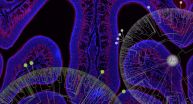We've all got a blind spot, but it can be shrunk
2015-08-31
(Press-News.org) You've probably never noticed, but the human eye includes an unavoidable blind spot. That's because the optic nerve that sends visual signals to the brain must pass through the retina, which creates a hole in that light-sensitive layer of tissue. When images project to that precise location, we miss them. Now researchers reporting in the Cell Press journal Current Biology on August 31 have some good news: this blind spot can be effectively "shrunk" with training, despite the fact that the hole in our visual field cannot be.
The findings raise the possibility that similar methods might improve vision in people with age-related macular degeneration, which is the leading cause of blindness in Western countries.
"We did not confidently expect to see much reduction in functional blindness, as you can never develop photosensitivity within the blind spot itself," says Paul Miller of The University of Queensland in Australia. "You can only enhance sensitivity at the blind spot periphery, but this proved sufficient to bring about a ten percent reduction in functional blindness."
The researchers trained 10 people for 20 consecutive weekdays on a direction-discrimination task in which they were presented with a drifting sinusoidal waveform in a ring centered about the physiological blind spot of one of their eyes. The size of the ring was adjusted such that participants could correctly gauge the direction of movement about 70% of the time.
At the end of the training, those individuals showed improvements in the ability to correctly judge both the direction and the color of the waveform. Training on one eye did not transfer to the blind spot in the untrained eye, suggesting that the improvement wasn't simply a matter of practicing the task. Rather, the researchers say, the data are consistent with the notion that training enhanced the sensitivity of neurons with receptive fields that partially overlap, or abut, the physiological blind spot. As a result, they say, the eye apparently becomes more sensitive to weak signals originating primarily from within the region of blindness.
If training protocols can reduce blindness associated with the physiological blind spot, they might prove similarly effective in other cases of blindness. Such training protocols might also be used to assist in the recovery of vision along with other developing technologies, such as the bionic eye or retinal stem cell therapy.
Miller says they plan to further optimize their training protocol in normally sighted people around the physiological blind spot and to then test its use in people with age-related macular degeneration.
INFORMATION:
This work was supported by the Australian Research Council.
Current Biology, Miller et al.: "Reducing the size of the human physiological blind spot through training" http://dx.doi.org/10.1016/j.cub.2015.07.026
Current Biology, published by Cell Press, is a bimonthly journal that features papers across all areas of biology. Current Biology strives to foster communication across fields of biology, both by publishing important findings of general interest and through highly accessible front matter for non-specialists. For more information please visit http://www.cell.com/current-biology. To receive media alerts for Current Biology or other Cell Press journals, contact press@cell.com.
ELSE PRESS RELEASES FROM THIS DATE:
2015-08-31
A higher resting heart rate and lower heart rate variability in older adults at high risk of heart disease are associated with poorer ability to function in daily life as well as future decline, according to a new research in CMAJ (Canadian Medical Association Journal).
"It has been hypothesized that heart rate and heart rate variability are markers of frailty, an increased vulnerability to stressors and functional decline," writes Dr. Behnam Sabayan, Department of Gerontology and Geriatrics, Leiden University Medical Center, Leiden, the Netherlands, with coauthors. "However, ...
2015-08-31
Lyme disease is becoming increasingly common in Canada, and Canadians with Lyme disease symptoms may seek diagnoses from laboratories in the United States, although many of the results will be false-positives, according to a commentary in CMAJ (Canadian Medical Association Journal).
"Patients with chronic subjective symptoms without a diagnosis can be vulnerable and desperate for an answer as to the cause of their illness," writes Dr. Dan Gregson, divisions of Medical Microbiology and Infectious Diseases, departments of Pathology and Laboratory Medicine, and Medicine, ...
2015-08-31
(Philadelphia, PA) - Early intervention facilitated by a digital health application for reporting symptoms of Chronic Obstructive Pulmonary Disease (COPD) provides key benefits for patients, according to the results of a Temple-led, two-year clinical study.
COPD is a serious chronic respiratory disease that is often characterized by flare-ups, called acute exacerbations, in which the patient may experience increased coughing, mucus, shortness of breath, wheezing, and a feeling of tightness in their chest. If exacerbation symptoms are not detected and treated in a timely ...
2015-08-31
(SACRAMENTO, Calif.) -- In addition to restricting when and where tobacco is used at work, UC Davis Health System research shows that employers can do something else to reduce smoking: raise wages.
Published in the August issue of the Annals of Epidemiology, the study found that a 10 percent increase in wages leads to about a 5 percent drop in smoking rates among workers who are male or who have high school educations or less and improves their overall chances of quitting smoking from 17 to 20 percent.
"Our findings are especially important as inflation-adjusted wages ...
2015-08-31
Amsterdam, NL, August 31, 2015 - About 50% of patients with Parkinson's disease (PD) experience freezing of gait (FOG), an inability to move forward while walking. This can affect not only mobility but also balance. In a new study published in Restorative Neurology and Neuroscience, researchers report that repetitive transcranial magnetic stimulation (rTMS) can reduce FOG and improve other motor skills in PD patients.
In a study conducted by researchers at the Sungkyunkwan University School of Medicine, Seoul, Korea, 17 PD patients experiencing FOG were treated with either ...
2015-08-31
BOSTON - Clinicians at Boston Medical Center (BMC) showed that expanding the number of sites offering office-based opioid treatment with buprenorphine (OBOT B) utilizing addiction nurse care managers, trainings and technical support resulted in more physicians becoming waivered to prescribe buprenorphine and more patients accessing treatment at sites across Massachusetts. This model, highlighted online in the Journal of Substance Abuse Treatment, demonstrates the efficacy of this medication-assisted treatment modality as a sustainable way to treat greater numbers of patients ...
2015-08-31
NASA's Aqua satellite and NOAA's GOES-East satellites provided views of Hurricane Jimena that showed it maintained a large eye and powerful thunderstorms around it. On August 31, Jimena continued moving through the Eastern Pacific as a major hurricane.
An infrared image from NOAA's GOES-West satellite on August 31 at 8:00 a.m. EDT revealed that Hurricane Jimena's wide-eye continued to be cloud free. The GOES image also showed thick bands of powerful thunderstorms circling the eye.
The Atmospheric Infrared Sounder or AIRS instrument aboard Aqua gathers infrared data ...
2015-08-31
A bill to improve the nutritional value of fast food restaurant meals marketed to children--like McDonald's Happy Meals--could have a wide enough impact to reduce calories, fat, and sodium, according to a new study led by researchers at NYU Langone Medical Center.
The study, which will publish in the American Journal of Preventive Medicine online on August 31, includes collaboration from NYU College of Global Public Health, NYU Wagner Graduate School of Public Service, and NYU Steinhardt School of Culture, Education, and Human Development.
The "Healthy Happy Meals" ...
2015-08-31
A team of scientists has successfully measured particles of light being "squeezed", in an experiment that had been written off in physics textbooks as impossible to observe.
Squeezing is a strange phenomenon of quantum physics. It creates a very specific form of light which is "low-noise" and is potentially useful in technology designed to pick up faint signals, such as the detection of gravitational waves.
The standard approach to squeezing light involves firing an intense laser beam at a material, usually a non-linear crystal, which produces the desired effect.
For ...
2015-08-31
In animals, numerous behaviors are governed by the olfactory perception of their surrounding world. Whether originating in the nose of a mammal or the antennas of an insect, perception results from the combined activation of multiple receptors located in these organs. Identifying the full repertoire of receptors stimulated by a given odorant would represent a key step in deciphering the code that mediates these behaviors. To this end, a tool that provides a complete olfactory receptor signature corresponding to any specific smell was developed in the Faculties of Science ...
LAST 30 PRESS RELEASES:
[Press-News.org] We've all got a blind spot, but it can be shrunk


